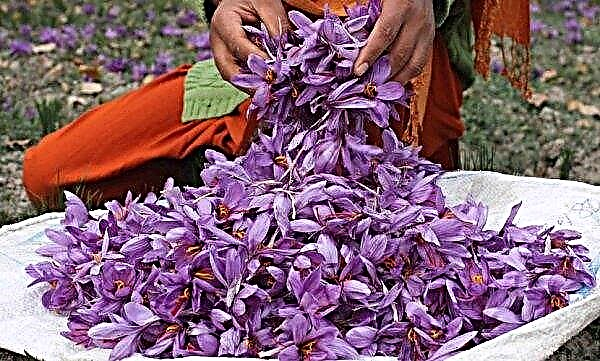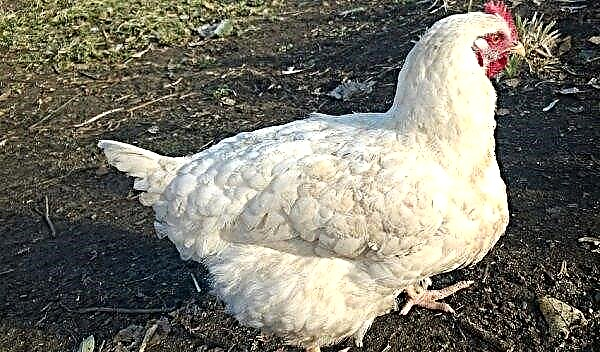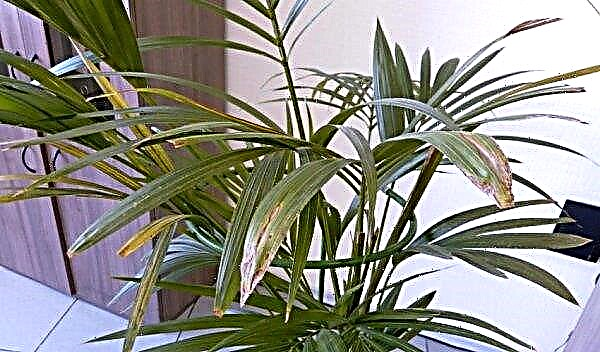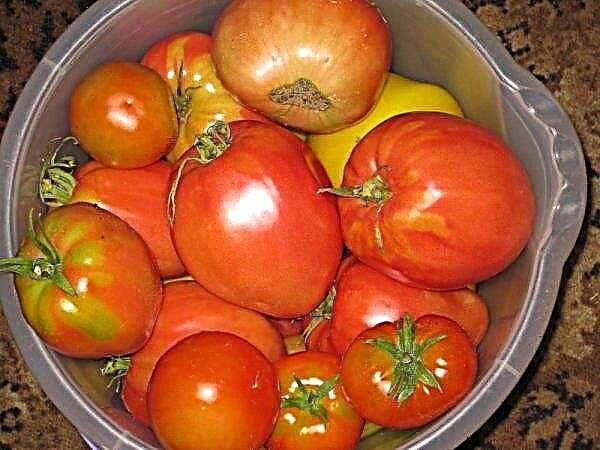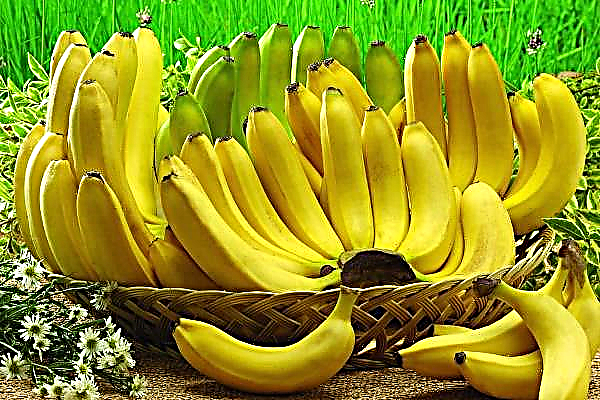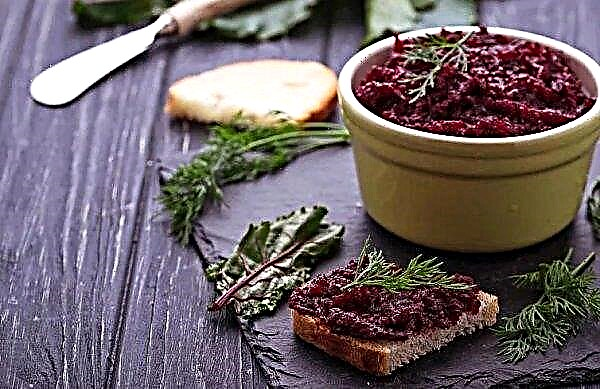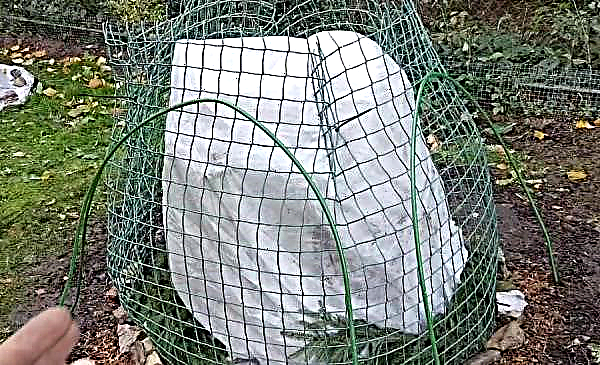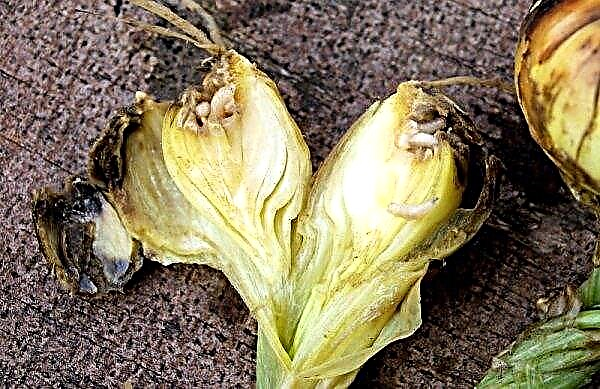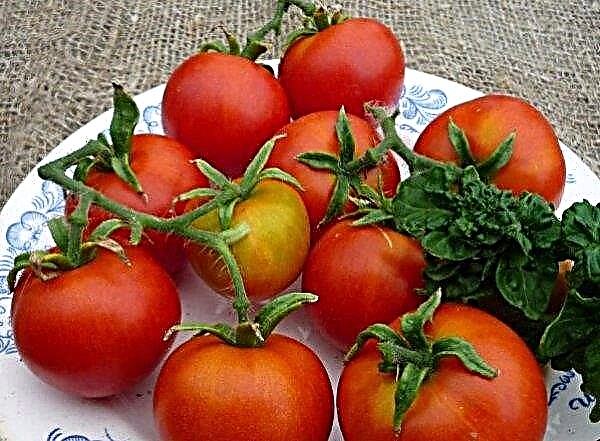Thuja western Danica Aurea is a dwarf slowly growing coniferous plant with incredibly beautiful yellow-green needles. It can grow in almost any environment without requiring careful maintenance. Ideal for decorating cottages and garden plots. Detailed information about the features of the variety and its care, read further in the material.
Grade description
The distinctive features of the thuja Danika Aurea are the miniature size and the spherical shape of the bush. The plant does not exceed a height of 80 cm, and a width of 1 m. The thuja will grow to the maximum size gradually over the course of 15 years, adding 5-7 cm in growth annually. The better the conditions for its development, the greater the growth. Conversely, if you do not fertilize, then you can artificially reduce the size of Danica.
Thuja forms a dense and compact crown. Its green needles become dark bronze in winter, and buds opened in spring will complement the branches with light green or yellowish endings. This shrub can be used as a hedge, planted in rock gardens and be an accent plant in a flower bed.Did you know? Thuja — Native to North America. The name of the tree “Arborvitae” arose from the Latin combination of words “arbor vitae”, which means “tree of life”. That's what the French settlers of Canada called him, having discovered that brewing tea from her bark was a cure for scurvy.
Botanical Description:
- type - bush;
- characteristic - coniferous, evergreen, dwarf;
- krone - spherical;
- maximum height - 80 cm;
- crown diameter - 1 m;
- growth rate is slow;
- shoots are numerous;
- the root system is small, located in the upper layers of the soil;
- needles - green, soft, scaly;
- color - depends on the season, in the summer - green, in the winter - bronze;
- frost resistance - up to -30 ° С;
- lighting - high;
- irrigation - moderate.
Landscape design application
Tui, both trees and shrubs help solve a number of problems in the garden. They can be used as hedges to close an unsightly wall or to enclose a recreation area. Thuja will also reduce the noise of the freeway and decorate the entrance to the building, making it more elegant. The useful life of the plant is 150 years. And this is another reason why the thuja is so popular in landscape design. Seedlings can also create an interesting decoration for a veranda or pergola if you plant them in containers.
As for decorative use in the garden, thuja find their application in all styles:
- traditional English (decoration of the facade and alleys with rows of conifers);
- rocarius (creating a flower bed on which coniferous shrubs can be accent plants);
- Japanese (use in the form of bonsai, topiary and other options).

Landing
Landing can be carried out at any time of the year. But autumn is considered the best of the seasons. Low air temperature promotes rooting, prevents thermal stress, and rainy autumn weather provides the necessary humidity for the development of the root system.
Did you know? It is believed that the smell of thuja drives away evil spirits.
For planting, it is recommended to choose an area in which the bush will receive at least 6 hours of daily sunlight. It is not advisable to plant a plant in the shade. This slows down its growth and development. The soil on the site can be any, but always well-drained. Thuja does not tolerate permanent moisture at the roots.
Site preparation
If you intend to plant a bush in the fall, then start by preparing the site. Remove weeds. Cover the landing area with a layer of dark polyethylene. The sun will warm the soil under it to + 60 ° C, destroying the seeds of weeds, pathogenic microflora and soil pests. This will take about a week. Then remove the polyethylene and dig the site to a depth of 0.5 m.
Measure the acidity of the soil with a tester. If not, pay attention to the appearance of the site. Abundance of weeds is a sign of acidic soil. It is also important that during growth and development, any plants use nutrients and at the same time oxidize the soil. Therefore, if something grew on the garden, the soil is acidic.
Correct it with chalk or lime. The standard for liming will be as follows:
- acidic soil - 500 g / m²;
- medium acid - 400 g / m²;
- slightly acidic - 300 g / m².

Chalk for deoxidation will need 2 times less. The correct level of acidity should be 6.0 to 8.0 pH. But expect that it will become so immediately after processing, is not worth it. The introduced substances will completely react by the next spring. Plan a landing 2 weeks after the site is dug up. During this time, the soil is slightly compacted, which is important for the root system.
Seedling Selection
When purchasing a plant in a pot or with a root system wrapped in a bag, plan a planting within a few days after receiving it. This is necessary so that the roots do not dry out.
Annual seedlings take root faster. Therefore, they make up the bulk of Danica Aurea in nurseries. The roots should be healthy, resilient and white. The plant itself is green.
Important! Yellow needles in a seedling — a sign that the plant is on the verge of death. But if such planting material arrived from the nursery by order via the Internet, be sure to treat it with “Kornevin” before planting and pour plenty of water after.
Step-by-step instruction
Landing Danica Aurea is possible both in containers and in open ground.
When planting thuja in a permanent place, the following steps must be taken:
- Dig a landing hole that will be 2 times the size of the root ball.
- If the site is poorly drained, then lay on the bottom a layer of gravel or pebbles, up to 15 cm thick.
- Depending on what soil is on the site, refine it. Dense and clay dilute with a bucket of compost. You can also add sand or chopped straw for loosening. In the sandy soil, on the contrary, apply clay for compaction.
- Place some of the soil on the drainage layer.
- Remove the seedling from the container. Spread the roots on the sides of the root ball.
- Place the plant in the middle of the recess.
- Starting from the sides, move towards the center, gradually falling asleep to the remaining soil. Make sure that the seedling is at the same level that it grew in the nursery.
- If there is still a part of the soil mixture, make a small mound from it around the arborvitae in order to make it easier to water the plant.
- Pour plenty of water over the bush immediately after planting. Maintain a regular irrigation schedule for a month after planting. Be sure to ensure that the soil does not dry out.

All dwarf varieties can be planted in containers. They are tolerant of root restrictions and can grow for years.
Important! Thuja is toxic to animals, especially to horses. Its essential oils contain neurotoxin thujone. It causes poisoning of the body, and a dose of 500 g is fatal to the animal.
Planting in a pot or container consists of the following steps:
- Choose a container of the right size. It should be 5 cm larger in diameter than the one in which the seedling arrived from the nursery. Do not take a "pot for growth." The plant will not absorb part of the moisture and this will cause the development of putrefactive bacteria in the soil.
- You can choose a container from any material: clay, ceramic, concrete, fiberglass, processed wood or durable plastic. But if the thuja will stand in the yard, then choose from resistant to freezing and thawing. For indoor plants, this is not so important.
- Be sure to lay a drainage layer on the bottom. Its thickness may be about ¼ of the height of the container.
- Prepare for planting a substrate of peat, coarse sand or vermiculite, taken in equal parts.
- Partially fill the pot with this soil mixture.
- Place the root ball on top of it in the middle of the container.
- Now add soil until you cover the root ball. After that, lightly tap on the sides so that the ground sags and fills the air pockets if they form.
- Water the plant.
- To preserve moisture, lay a layer of mulch on the surface, but do not touch the shoots of the bush. Danica Aurea in a pot will lose moisture faster than in open ground and the mulching layer will protect her from this.

Care
Further plant care will consist of:
- glaze;
- fertilizer application;
- trimming
- prevention of diseases and pests;
- preparing shrubs for wintering.
With proper agricultural technology, the bushes will delight you with good development and abundant greenery.. They may also need shelter from bright sunlight in the summer if the thuja is planted on the south side of the site.
Winter is also a source of problems for the plant. Heavy snow and ice on the branches can bend and break them. Always use a broom to gently brush off a heavy, wet snow cover before it accumulates. Damaged branches will have to be cut.
Watering and feeding
When planting in good soil, a sufficient amount of water and sunlight, the thaw does not need to be fertilized. But if growth slows down, then soil nutrition will need to be increased. Container plants need to be fertilized regularly, as the soil there is depleted much earlier. Use granular fertilizer with slow release of nutrients. This will avoid root burns. And do not forget to water the thaw after each feeding.
As for irrigation, the plant can suffer both from the abundance of water, and from its lack. Excessive moisture leads to discoloration of the needles, rotting of the roots, fungal infections. During the first few months after planting, the bushes need to be watered every day or two if it does not rain.
Important! Evergreens do not sleep in winter, so water if the soil is dry.
This is necessary so that the roots penetrate deeper into the soil. Adult plants need 10–20 liters of water per irrigation. You can change the frequency of irrigation if the soil is wet. Potted arborvitae are watered 2 times a week and control soil moisture in the winter.
Weeding and mulching
A day after irrigation, the soil is loosened to a depth of 4 cm. This is necessary in order to provide air access to the root system. Most soil bacteria use oxygen in the decomposition of organics. And the lack of air is fatal for them. At the same time as soil aeration, weeds are removed.
But if the root zone is covered with a layer of mulch, then the need for loosening disappears. Mulching material prevents soil compaction, weed growth and soil moisture evaporation. For this, you can use sawdust, wood chips, straw, etc. The benefit of organic mulching materials is that they decompose under the influence of moisture and heat, creating additional nutrition for the plant.
Haircut and Shaping
Thuja retains its natural shape and does not need regular pruning. The exception is topiary. They are given shape at the seedling stage and subsequently maintained by regularly removing those branches that spoil the view.
There are not many rules for cutting bushes, but they must be observed:
- In March, old and dry branches are removed. This will stimulate the growth of new ones.
- The top is not recommended to be cut to reduce growth. Of course, it will slow down, but branching will begin at the cut point and this will make the plant shape sloppy. Instead, selective cropping or thinning is used to allow more sunlight and air to enter the crown. They will inhibit the development of pathogenic microorganisms and pests.
- Dead or diseased branches are cut immediately. This will prevent rotting and the spread of disease. Remove them at the point of connection with the trunk and lubricate the cut site with garden var.
- During spring pruning, dead needles are also shaken out from inside the bush.
Video: Cutting spherical thuja
Shelter from the sun
These plants grow well in full or partial lighting. The more light, the more vigorous growth and greener needles. But it must be borne in mind that an excess of sunlight, especially in the southern regions, is harmful to seedlings. And so in the summer they need to create shading. This may be a regular piece of plywood that you place over the plant.
Did you know? The name "thuja" was given to this group of trees by the Swedish botanist Karl Linnaeus in 1753. It comes from the Greek word thuo, which means “to sacrifice,” since the branches of this fragrant tree were burned during sacrifices to the gods.
Diseases and Pests
Trees are unhealthy due to improper care:
- lack of nutrients;
- excessive or insufficient lighting;
- excessive or absent watering;
- natural factors - viruses, pests.

A diseased plant becomes more susceptible to pest attacks. Therefore, gardeners seek to fight disease through prevention, as well as provide the right conditions for the development of Danica Aurea.
Excessive watering causes fungal infections. Therefore, it is necessary to ensure a good drainage of water from the roots. Add compost to the soil when planting; it will help maintain drainage. Also, do not water the plant if the topsoil is wet.Did you know? In herbal medicine, thuja oil is used as an anthelmintic, diuretic and digestive agent. Application to the skin relieves pain in arthritis, rheumatism and is used to treat fungal infections of the skin.
The main problems of thuja:
- the tips of the branches turn brown - it means the plant receives little water;
- the needles turn yellow in the summer - she suffers from a lack of nutrients, use balanced fertilizers for feeding;
- if the needles turn yellow in winter, this means that the tree is very weathered and it is necessary to create a screen of plywood between the crown and the wind, nothing else needs to be done, in spring its color will be restored;
- when you see interweaving of dry needles on the shoots - this means that insects have laid eggs, open such a cluster, and if there are caterpillars inside, treat the bush with a saturated soapy solution;
- black powder spraying on needles is a sooty mold, it develops on aphid secretions, treat the bush with a soap solution and then a 1% solution of Bordeaux fluid;
- small insects on the shoots similar to scales - these are scale insects, use “Karbofos”, “Decis” spraying to control them;
- if the bush has stopped its development, the needles have turned brown - this is the root rot caused by excess moisture, create a normal drainage system in the soil.

Growing decorative thuja at home is not difficult. She rarely gets sick, does not require special care and does not make a claim to the climate. Therefore, it can be planted for landscaping parklands, terraces, as well as halls of hotels and other public places.

